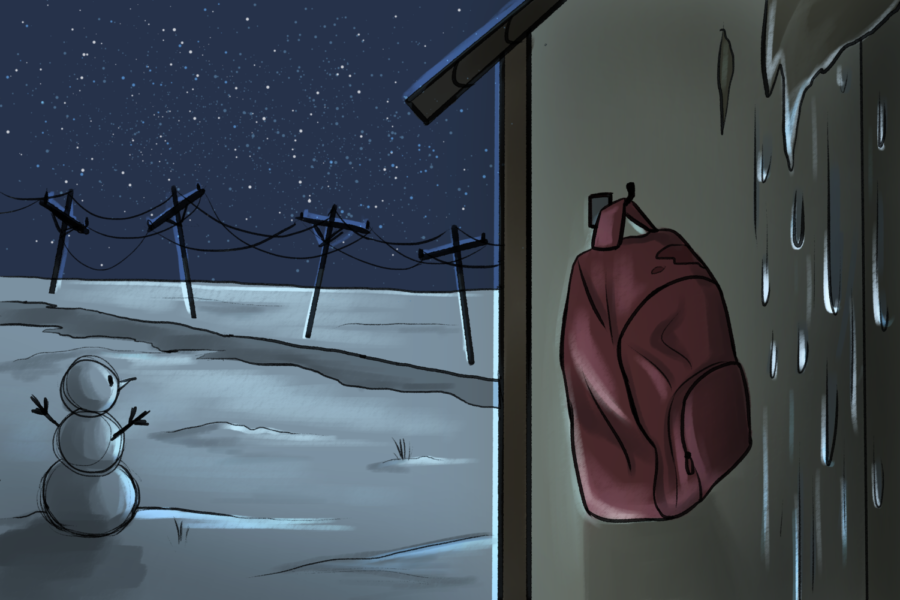History and Geopolitics of Energy class discusses Texas power grid, outages
Due to Winter Storm Uri, Texas suffered rolling blackouts, burst pipes and below-freezing temperatures.
March 12, 2021
On Valentine’s day, Texas went dark.
In the following week, the state suffered through rolling blackouts, burst pipes and below-freezing temperatures. Winter Storm Uri, which travelled from the Northwest to the deep South, covered 73% of the country at its peak. Snowfall was heavier and temperatures were lower further north, but Texan infrastructure was hit the hardest.
Texas is the only state in the contiguous United States with its own energy grid, according to History and Geopolitics of Energy teacher Eleanor Cannon; the rest of the country is divided into the federally-run Eastern and Western grids. Texas is privatized and managed by the Electric Reliability Council of Texas (ERCOT), but power failures have called the “reliability” of ERCOT into question.
The separation of Texas’ grid from the rest of the country made it difficult to import energy from less affected regions, according to Grace Nockolds, a senior in Cannon’s class.
“If we were connected to other parts of the country that still had their power generation going, they could send us power,” she said.
The Eastern and Western networks continued to function because they are held to stricter winterization standards than Texas, which keeps oil refineries, wind turbines, nuclear plants and other power sources safe from freezing temperatures. Until Uri, there was no incentive for ERCOT to spend on winterization.
“All of the power generation seemed to go down because we weren’t prepared for it,” Nockolds said. “Texas doesn’t have as many regulations, so we didn’t have to be weatherized. A lot of our pipes weren’t prepared for cold temperatures.”
Though Governor Greg Abbot and many others blamed green energy sources for the blackouts, Cannon said that sources of thermal energy, including coal, gas and nuclear, were most affected. 16 gigawatts of renewable energy sources were shut down, but thermal energy lost 30 gigawatts. Natural gas lagged the furthest behind its usual production.
We need to look at putting in at least some minimal regulation to protect us from the worst case scenario.
— Eleanor Cannon
In fact, climate change played a large role in the crisis. According to AP Environmental Science teacher Graham Hegeman, carbon emissions from thermal energy have weakened the jet stream and allowed cold air which usually plagues Canada and the Arctic to blow down to Texas.
“Even though [extreme cold] events are going to be rare, we’ve had two in the last 15 years,” Hegeman said. “We can be pretty certain that we’re going to have another one in the next 20 years, and it’s a huge risk to public health to just not winterize because we don’t have them every year.”
The week of rolling blackouts could have been much more devastating. When demand for electricity exceeds a grid’s capacity, the grid is in danger of being overwhelmed and completely shutting down in a “total blackout.” The ERCOT grid was allegedly “minutes” away from a total blackout, which would have lasted weeks to months and require massive infrastructure changes to fix.
Harris County alone has confirmed 25 deaths, and further investigation will most likely reveal more. Mismanagement and privatization of Texan energy allowed ERCOT to cut corners, and global warming proved this practice to be deadly.
“This was a green swan event, [a climate event related to global warming], which is becoming increasingly normal,” Cannon said. “We need to look at putting in at least some minimal regulation to protect us from the worst case scenario.”
Additional reporting by Abigail Hindman, Ella Chen and Ella West.
























